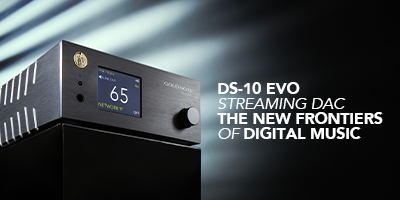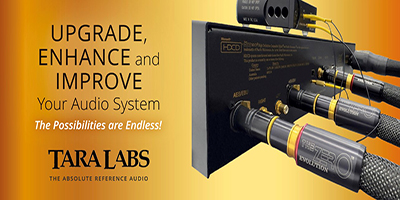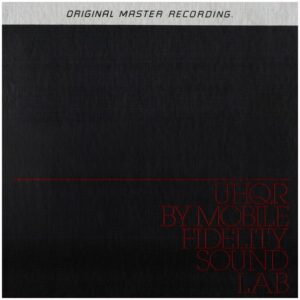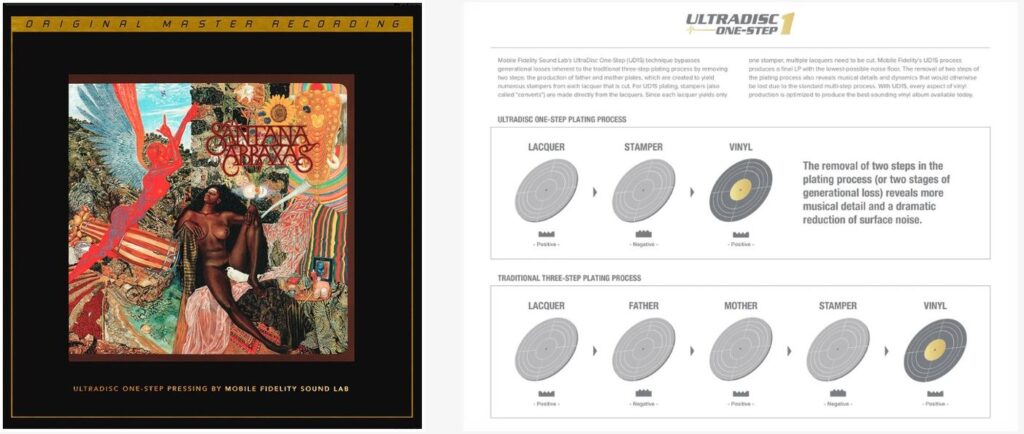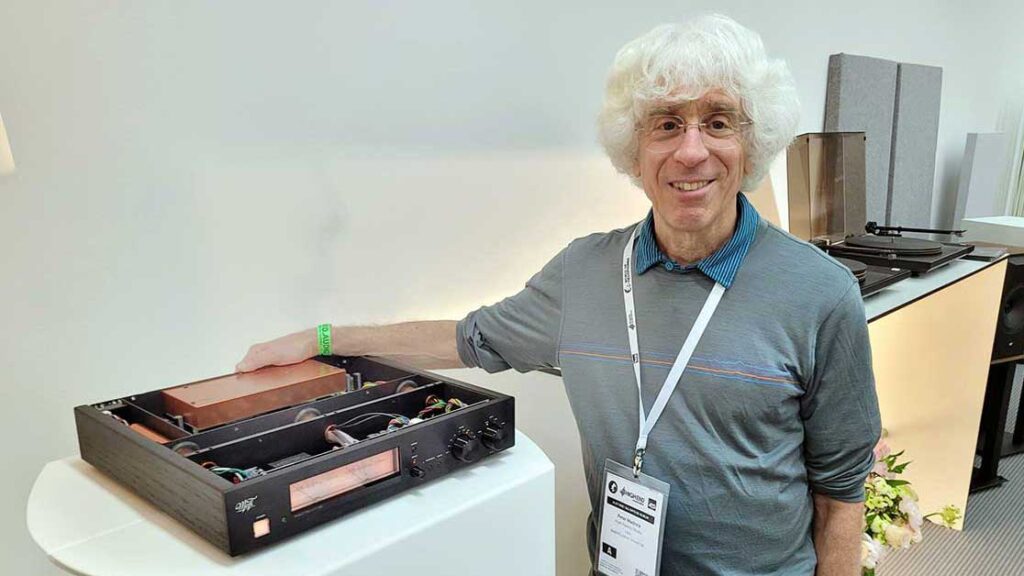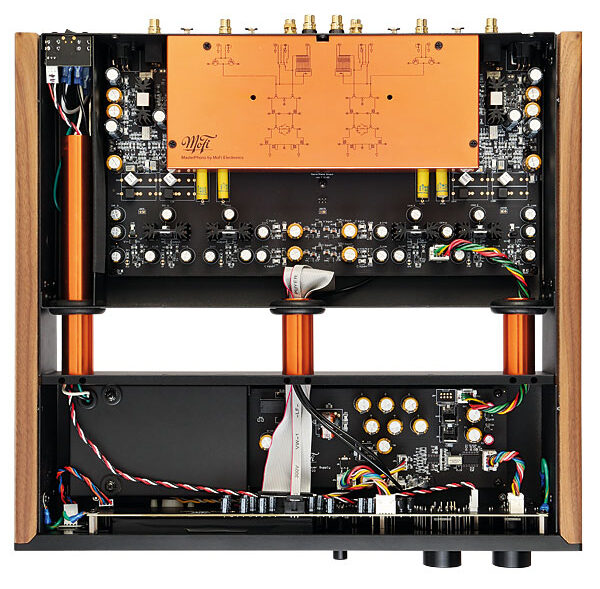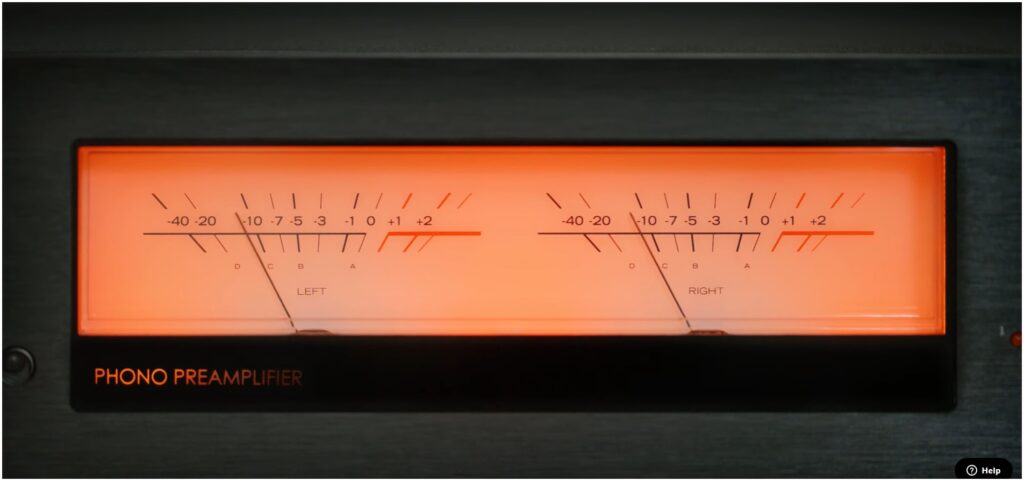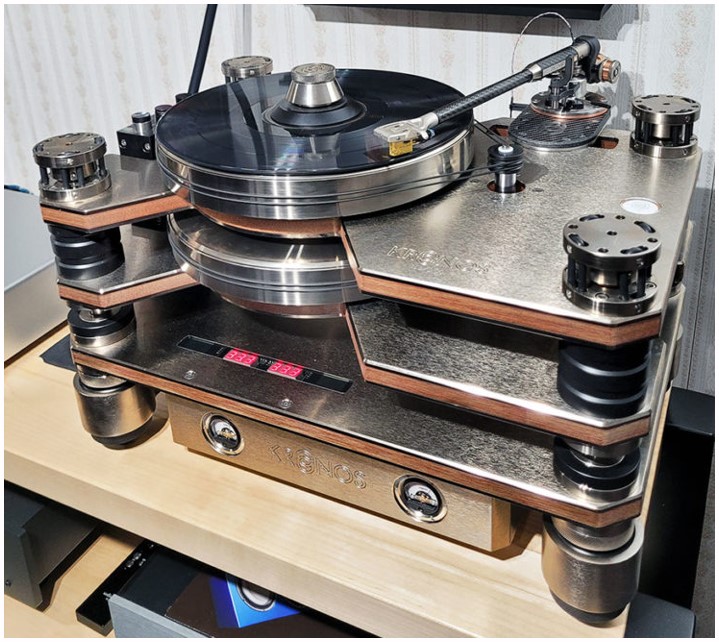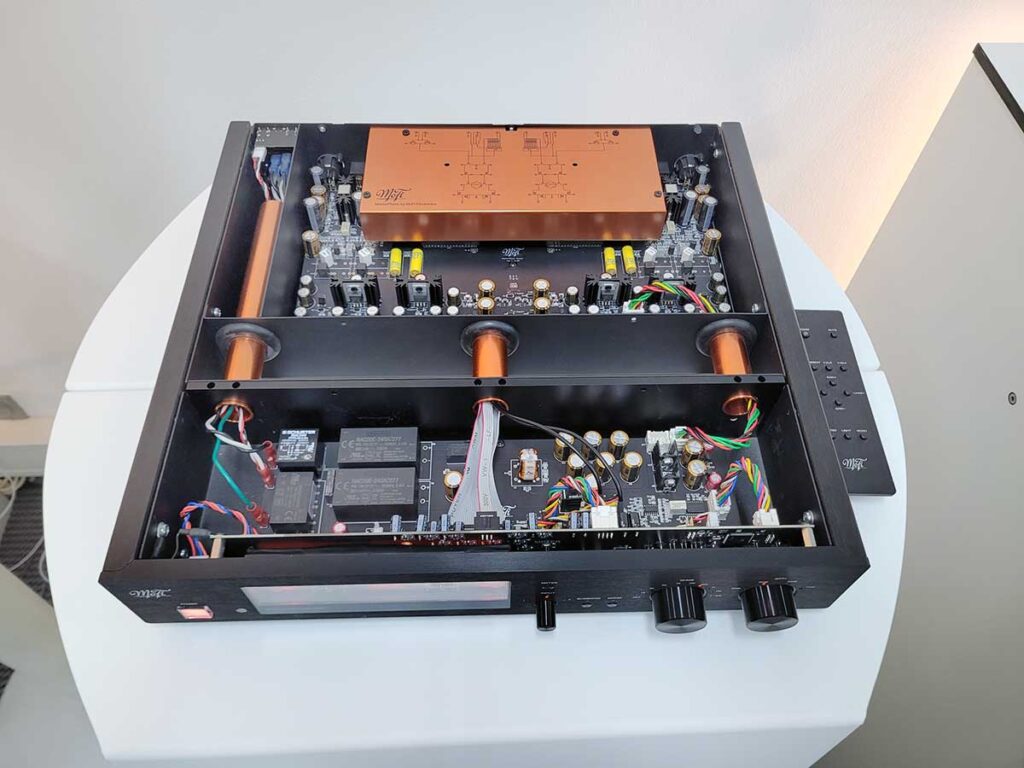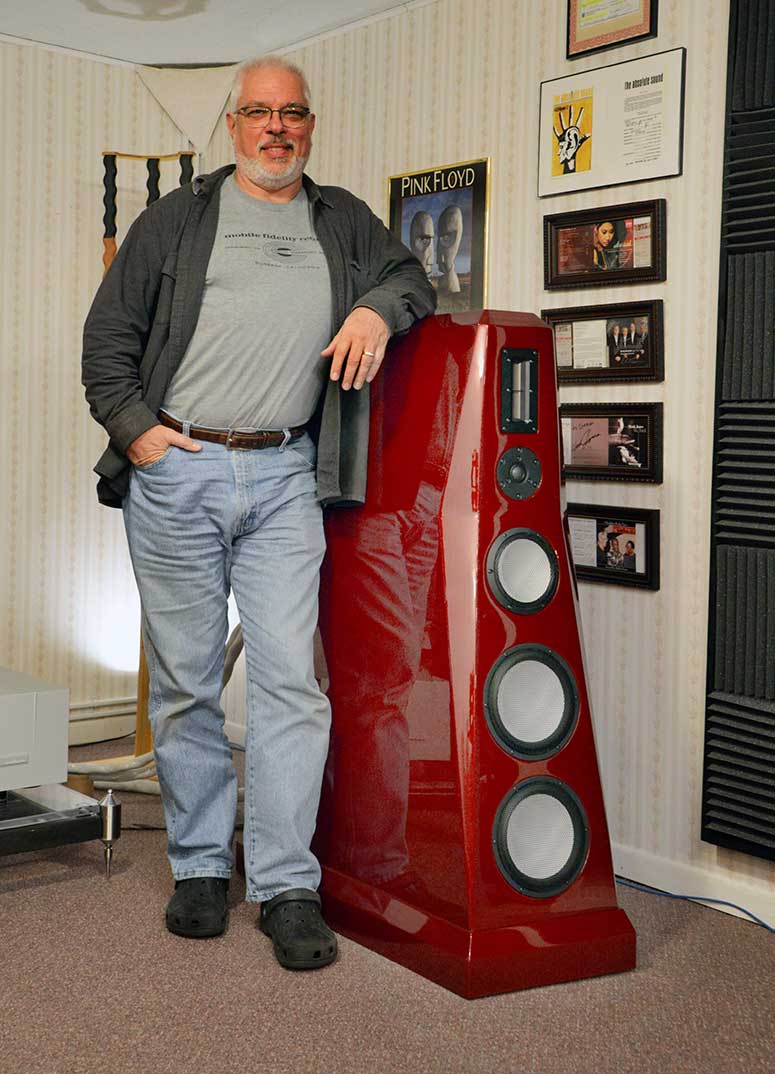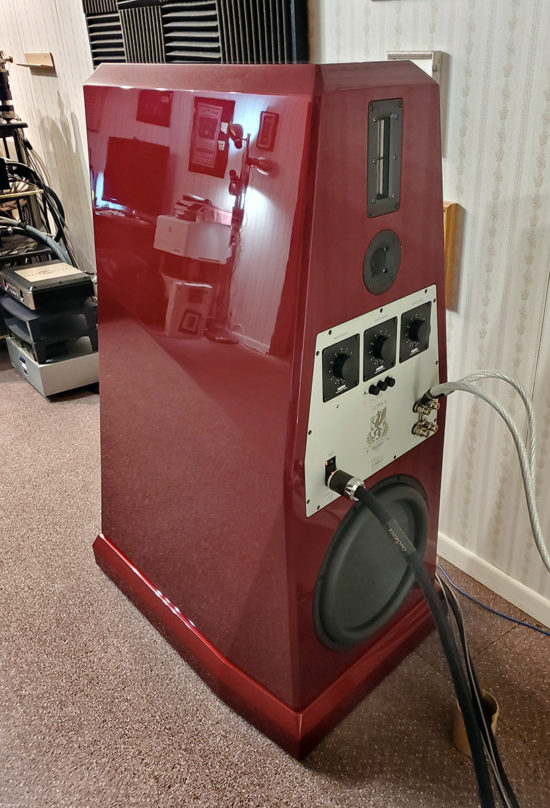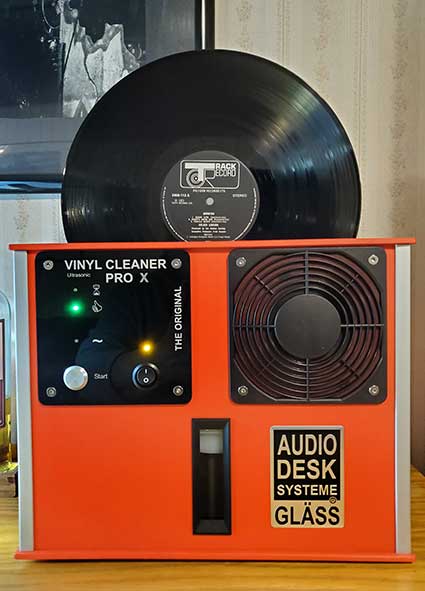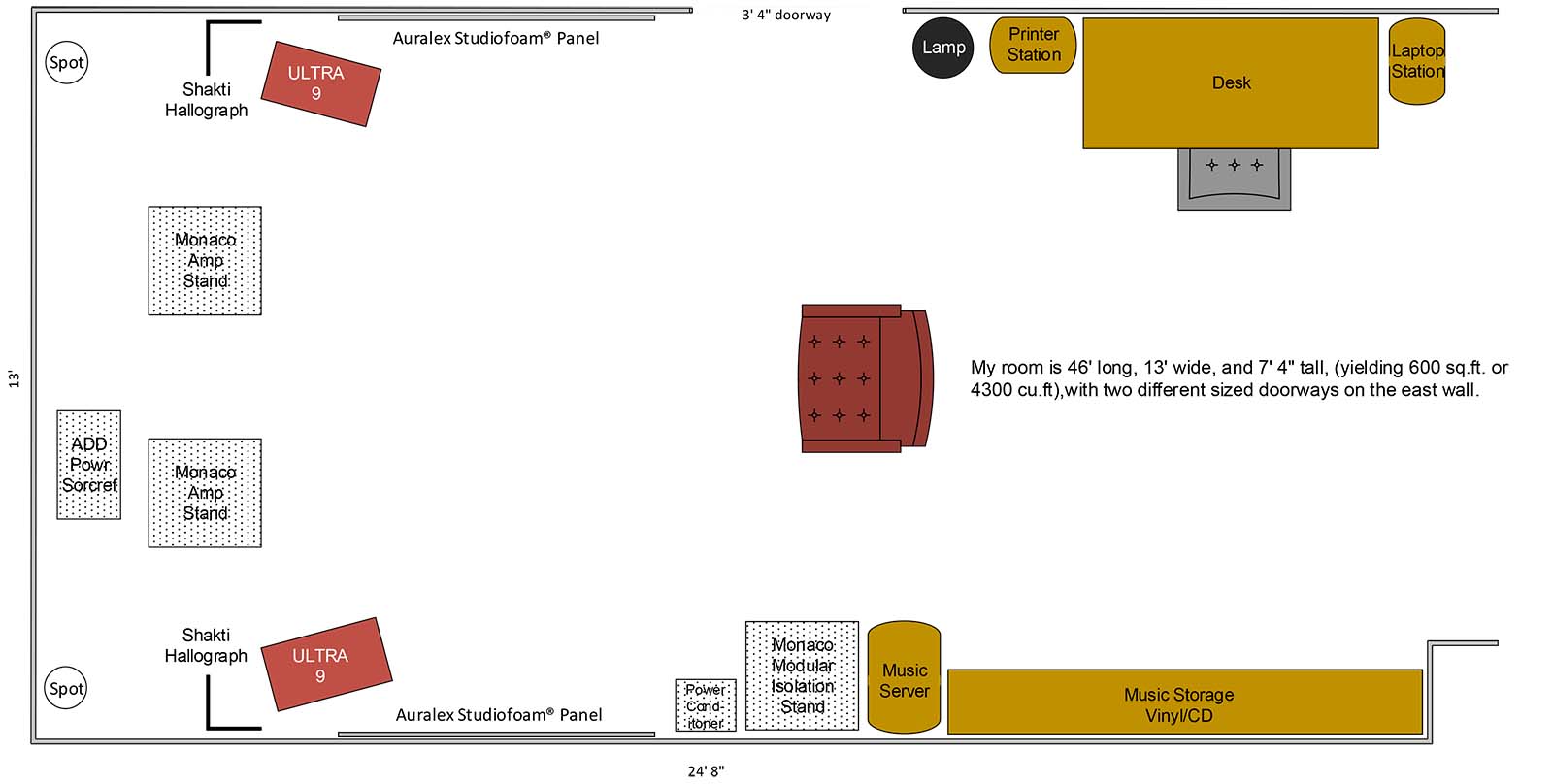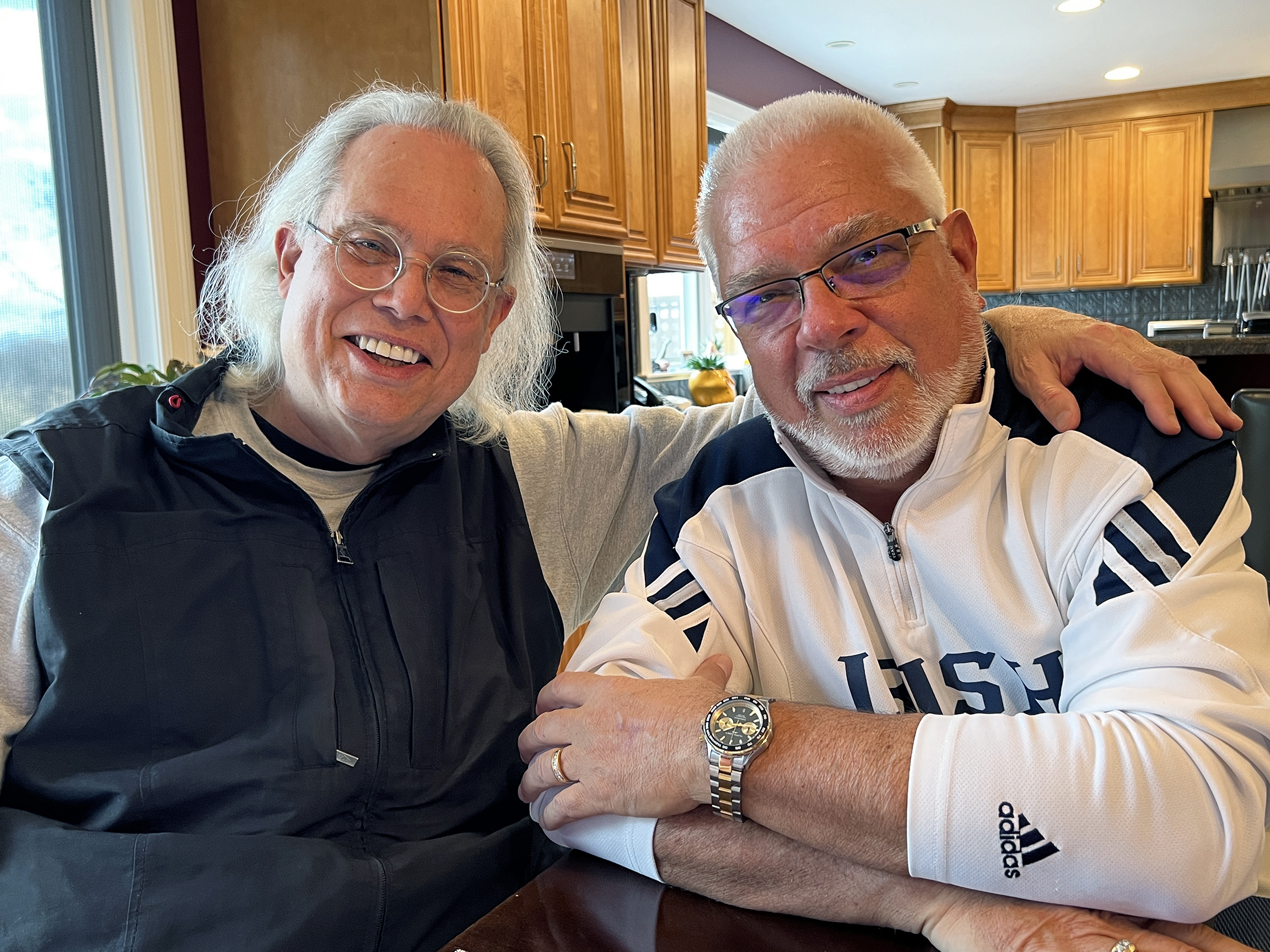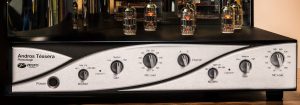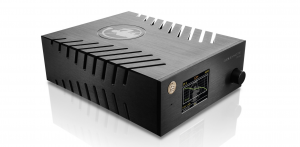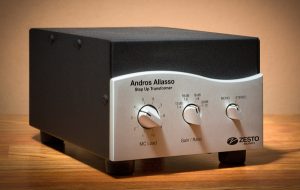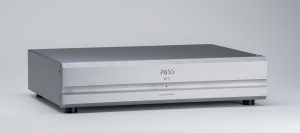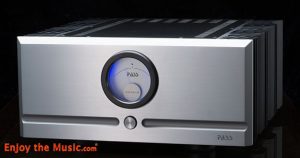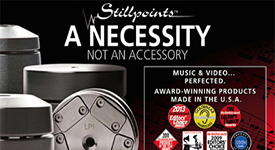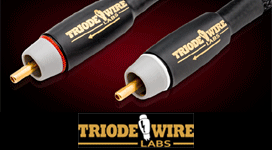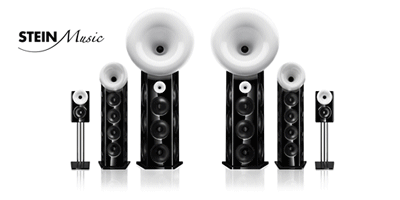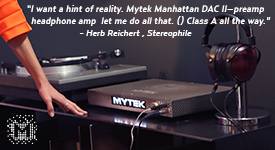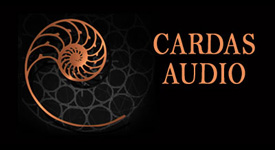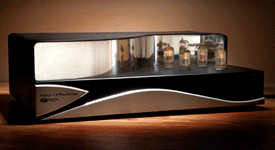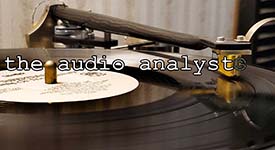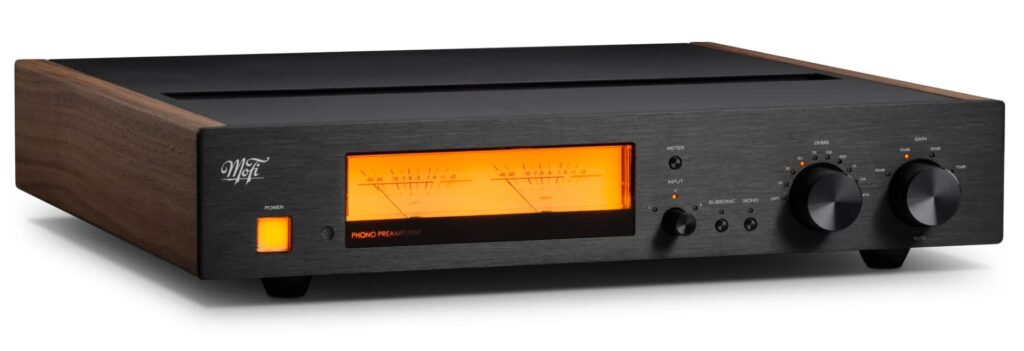
Before we explore the exceptional performance and remarkable value that the moderately priced Mobile Fidelity MasterPhono Phonostage represents, the historian in me wants to make sure you understand why it is so noteworthy.
Since Mobile Fidelity's humble beginnings as an independently owned audiophile recording company by recording engineer Brad Miller in March of 1958, it has undergone many transformations and established the bar by which all who have chosen to follow in their pioneering LP remastering footsteps since, the numerous other specialty LP remastering houses like Acoustic Sounds, CBS Mastersound, Classic Records, DCC, Friday Music, Impex, Music on Vinyl, Nautilus, ORG, Rhino, or Speakers Corner must be measured.
The first recording on the Mobile Fidelity label was a field recording of a Southern Pacific steam locomotive. Later LPs included other steam trains, environmental sounds, and orchestral music, eventually leading them to more popular recordings. I have several of those early releases, starting with 1960's "Remember When?... A High Fidelity Recording of Railroad sounds," MF 5/M for Mono.
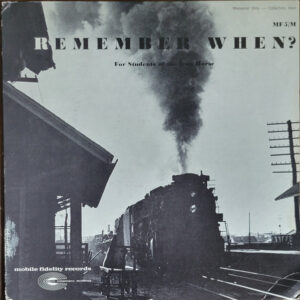
By 1978, soon to be known colloquially as "MoFi," they began to acquire licenses that allowed them to remaster, at half speed, many of the era's most regarded recordings from artists such as Supertramp, Steely Dan, and Al Stewart. Two of my earliest acquisitions from the Mobile Fidelity Original Master Recording catalog include "Crime of the Century" and "Year of the Cat," their fifth and ninth release, respectively.

1981 through 1983 brought the release of the eight original Mobile Fidelity UHQR releases, the MFQR series… the UHQRs were not only mastered at half-speed, but they were also pressed in Japan on JVCs advanced "Super Vinyl" formulation as 200-gram LPs, limited to five thousand pressings each, issued in hand-numbered deluxe boxed sets. They also released a companion series of high-fidelity prerecorded cassette tapes, and moved into the production of optical disc media, pressing CDs in both Aluminum and Gold plating.
But with the inevitable ascendancy of the compact disc format, after filing for bankruptcy in November of 1999, the original Mobile Fidelity went out of business. In 2001, Jim Davis, owner of
Chicago's well-established Music Direct, purchased not only the Mobile Fidelity Sound Lab name, but its established proprietary mastering equipment and process, a bit of wizardry devised and implemented by the renowned Tim de Paravicini, as well as all associated intellectual property, sparking an incredible resurgence. Soon there were new releases and titles reissued under the MoFi Original Master Recording banner. But 2016 represented a milestone year for the brand, with the realization of a new hyper-performance series of LPs and their entry into the manufacture of consumer electronics components.
Created in the spirit of the original early eighties UHQR offerings, the UltraDisc One-Step series premiered with the release of Carlos Santana's second release, Abraxas. This UD1S process, after eliminating the industry-standard three-step lacquer replication process, and thereby bypassing two unnecessary steps of generational loss, they were also stamped as 200-gram pressings from the latest, quietest, semi-translucent Super-Vinyl formulation, and released in deluxe, numbered, boxed sets.
That same time saw the introduction of a line of audio products carrying the MoFi Electronics badge, with offerings including turntables and phonostages—including the original very affordable UltraPhono and headphone amp, and the Studio Phonostages, both from the mind of Tim de Paravicini, as well as phono cartridges, loudspeakers, and accessories, all of which were developed in collaboration with some of the industry's most prominent and successful designers. Their turntable and cartridge line-up represents a collaboration with Allen Perkins, founder of Spiral Groove. Loudspeakers are designed by industry legend Andrew Jones, whose decades of design experience at KEF, Infinity, Pioneer, TAD, and Elac speak for themself. And linking us to today's Masterphono Phonostage, their lead Audio Products Electronics Design Engineer, hired in 2020, is longtime friend, Peter Madnick.
Peter Madnick showing off his new MoFi Electronics MasterPhono Phonostage May, 2024 during High End Munich. Photo by Greg Weaver
With over 45 years as a prolific industry designer, leading to something on the order of 450 products delivered to the consumer electronics market—yeah, I said 450, think about that—Peter began his audio journey in much the same manner as many others did in the early and mid-1970s. At 15, he took a position in a local stereo store, as a stockboy at first, and in short order, made the transition to the sales floor.
In 1977, he and two colleagues partnered a new stereo store, Natural Sound, which opened in Framingham, which is coincidentally, also home to Bose, and then headed off to Babson College. 1979 saw him join Dennesen Electronics for a stint, but it was with his move to California some six years later, and after a time consulting there, that I first heard his name, when in 1988, he co-founded Audio Alchemy with Mark Schifter. Audio Alchemy originally offered a lineup of game-changing, reasonably priced digital audio converters, re-clockers, and anti-jitter devices, and soon added amplifiers, preamplifiers, phonostages, and headphone amps to their offerings. What many music lovers my age may recall about Audio Alchemy was that they were among the first to champion the use of the I2S digital interface.
When Audio Alchemy dissolved in the late 1990s, he spent some time designing video projectors for Runco, and moved on to work on group projects at Monster Cable starting in 1998. But in 2008, he was chosen to lead the extraordinarily capable Constellation Audio engineering team, along with the contributions of James Bongiorno, John Curl, Bascom King, and Demian Martin. After his success in accomplishing world-class performance products with Constellation Audio, his resurrection of the Audio Alchemy brand in 2013 not only reaffirmed his triumphs in crafting more affordable products yet again, but also led to ELAC's decision to acquire the brand in 2016. Though he still designs for ELAC, and consults for other brands, 2020 saw Mobile Fidelity offer him the opportunity of becoming their senior electronics engineer. The remarkable MasterPhono phonostage under evaluation here is his first realization for the brand. It's time to take a closer look at this remarkable machine.
Its physical layout and conceptualization are extraordinary. Under the budgetary constraints set for this phonostage, a separate external linear power supply and all that would entail was out of the question. But that didn't deter Peter. His response was an extraordinary exploitation of the two-box approach in a single multi-stage chassis; two compartments physically separated from one another by a space of an inch and a half, coupled using three roughly one-inch diameter copper cable conduits, each of them spaced apart by roughly seven inches, to transfer signal and power between them.
With its indisputably retro appearance, at seventeen inches wide, standing some three-and-one-half-inches tall, starting with the front-most five-and-one-half-inch deep compartment, the MasterPhono's faceplate holds its square push button power button, its large dual VU meters that allow both monitoring of, and or the ability to calibrate the phono cartridge azimuth, the meter on/off switch, its input selector—which is also used to dim its illumination, its subsonic filter and mono switches, and the loading and gain selectors, with their string of LED indicators to display the current loading and gain settings.
It also houses the units cascaded voltage-regulated power supply, as well as all logic and microprocessing components. After the inch-and-a-half space between the two sub-chassis compartments, the rear eight-and-one-half-inch compartment isolates all the low-voltage, extremely sensitive circuitry, including the unit's multiple inputs and output, its passive RIAA equalization and discrete JFET amplification circuitry, within a temperature-controlled, shielded copper enclosure. The rear panel includes the IEC socket and AC rocker switch, and its USB C upgrade port, to allow for future expansion. Each input, both the traditional voltage input, and its unique current—or transimpedance—input, as well as the output, all allow for either RCA or XLR connectivity.
If you are paying attention, you will recognize that this elegantly implemented, brilliantly simple, and effective solution permits the convenience and affordability of using a quasi-single chassis unit, yet still affords exceptionally effective protection of the susceptible surrounding circuitry from EMI/RFI and parasitic induction, and you may begin to understand what kind of magic this phonostage can deliver.
Talk about an abundance of functionality and options. A fully discrete design from input to output, with four gain selections for either MM or MC cartridges, ranging from 40 to 70db, in ten Decibel increments. With loading options including 15, 30, 50, 75, 100, 500, 1000, 10,000 ohms for voltage based Moving Coil carts, 47k Ohms with 150pF of capacitive loading for Moving Magnets carts, as well as a dedicated set of RCA jacks on the back panel to facilitate the implementation of any desired custom value you may wish to use, it should satisfy even the most demanding vinylphiles.
Oh, and all those gain and loading options are adjustable from the convenience of your listening position using the included, full-function Remote Control. It's a substantial affair, a sturdy metal box, some six-and-a-half inches long, two inches wide, and an inch tall, with its 12-button arrangement, it weighs in at just over a half pound! As well as control of the gain and loading options, it allows for input selection, power cycling, muting, mono, filter engagement, and lighting control.
Like many considerably more pricy phonostages, such as the highly regarded $31,000 CH Precision P1 dual mono phonostage, the MasterPhono includes a moving coil current input circuit, an option tailored to maximize the performance from low source-impedance phono cartridges by utilizing transimpedance dynamic loading. Unlike traditional voltage-mode circuits, transimpedance-based circuits amplify the cartridge's current rather than its voltage, implementing the cartridge's native gain and loading preferences. The results are often realized as an even greater reduction in noise, improved tracking and damping, enhanced transparency, detail, soundstaging, and affording and enrichment of both the air and space around the voices of instruments and vocals.
With a frequency response given as 10Hz to 50kHz, ± two-tenths of a decibel (0.20dB), exceptional signal-to-noise ratios of 93 dB for moving coil or 85 dB for moving magnet cartridges, and an RIAA Accuracy of ± five hundreds of a decibel, (0.05 dB), this thing measures better than some phonostages selling for three or four times its asking price of $5995! But how does it sound?
While there are several areas of performance where the MasterPhono simply cannot compete with the finest, world-class phonostages available today, there are many more areas where it not only patently excels in its class, but bests many other phonostages costing several times as much. Let's focus on those strengths.
Whether pimping out my Second Space system, using my vintage Micro Seiki turntable fitted with a Monster Cable Sigma Genesis 2000 cart, or "slumming" it in my reference rig, fed from my Kronos Pro LE, its Super Capacitor Power Supply, Kronos Discover RS arm, and Etsuro Gold cartridge, this upstart phonostage couldn't refrain from strutting its sonic accomplishments.
As the heart of either of my analog systems, I was immediately struck by its enveloping and stark quietness—an almost tangible silence, one that allowed the music to emerge and soar from a near perfectly "black" background, conspicuously free of any distracting low-level noise. This was even more impressive when taking advantage of the contributions of the current-based input, as both of my chosen moving coil cartridges offer a four-ohm internal impedance at one kHz.
After taking up residence in my reference rig, its generous degree of midrange transparency, fleshed out with an unforced and remarkably authentic tonality, became just as apparent. It was articulate without being exaggerated or spotlit, yet rife with a liberal helping of body and bloom, revealing its uncanny ability to uncover detail with astonishing refinement, while providing for an extremely organic and involving presentation.
A closer examination of its frequency and tonal characteristics, starting with its foundation, reveals that bass is solid, tight, and rendered with exceptionally well-defined pitch. The lowest octaves are offered with authoritative weight, impact, and impressive slam, with no discernible softening or slurring.
Midrange tone and texture are among this preamp's more significant gifts to listeners. Everything from pipe organ to cymbals, from pianos to strings, from horns to the human voice, is presented with unadorned purity, unambiguous tonal accuracy, and an effortless and concise sense of resolution.
Treble is purely portrayed; clean, laden with detail, and highly resolved, resulting in an almost magical presentation of the top octaves, extending smoothly beyond the audible bands, rendering both focus and "air" to spare.
When it comes to the precise delineation of spatial cues, natural soundstage layering, and accuracy of image location and sizing, as well as its ability to portray dynamic events, of both the micro and macro varieties, in all their complex shadings and with uncannily appropriate scale, it approaches the performance of the very best I've heard.
And while it may not recover the last scintilla of resolution or transparency when contrasted with some more zealous designs, its capacity to serve up remarkably precise leading-edge transients, teeming with trailing decay and ambient nuance, to render a remarkably detailed and intricate view into the performance, one that is full-bodied, as well as descript and refined, it establishes the bar for its class, and honestly for many other entrants that cost considerably more.
If I were to choose a single word to best depict the performance of the MoFi Electronics MasterPhono Phonostages performance characteristics, that word would be "balanced." While I don't think anyone would suggest that the MasterPhono is affordable to every budget, what it delivers to those who are fortunate enough to live with its laudable contributions to their system is an unparalleled balance of performance, convenience, versatility, and affordability. And all of these deftly accomplished attributes are delivered well below what it might cost to enjoy them from any other phonostage known to me.
While I cannot begin to count the number of phonostages I've evaluated and listened to over the past five decades, I can say that every so infrequently, a component comes along that redefines what can be accomplished at its price. The MoFi Electronics MasterPhono Phonostage is a perfect example of such an overachiever.
A sincere tip of my hat to both Mobile Fidelity for choosing to realize such an outstanding component, and to the venerate Peter Madnick for yet again demonstrating that he is one of the most accomplished and gifted designers of our time.
As such, the MoFi MasterPhono Phonostage earns my most enthusiastic recommendation.
Specifications
- Gain: Selectable gain for MM or MC 40dB, 50dB, 60dB, 70dB
- RIAA Accuracy: -+/- 0.05dB
- Frequency Response: 10Hz – 50KHz ±0.20dB
- Signal To Noise Ratio: 93dB (MM), 85dB (MC)
- Loading: 15 Ohms, 30 Ohms, 50 Ohms, 75 Ohms, 100 Ohms, 500 Ohms, 1kOhms, 10k Ohms, 47k Ohms+150pF, & "Custom"
- THD: 10mV@1kHz MM low 0.005% A-Weighted, 10mV@1kHz MM high 0.005% A-Weighted, 1mV@1kHz MC low 0.010% A-Weighted, 1mV@1kHz MC high 0.013% A-Weighted
- Max Output: @1% THD, 10 Volts RMS
- Dimensions (WHD): 17" x 3.5" x 15.75" (43.2 x 8.9 x 40 cm)
- Weight: 15 lb / 6.8 kg
- Warranty: Five years - parts/labor
Masterphono Phonostage
Price: $5995
MoFo Electronics

